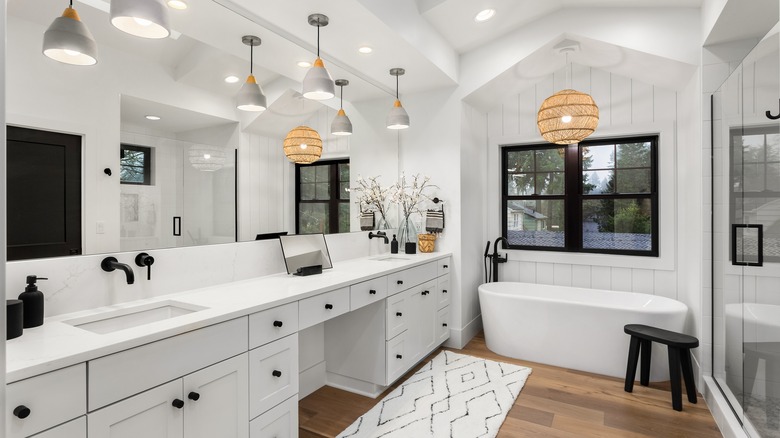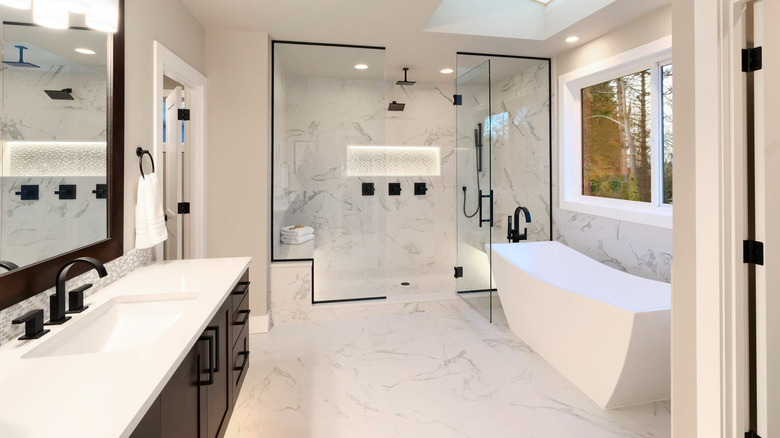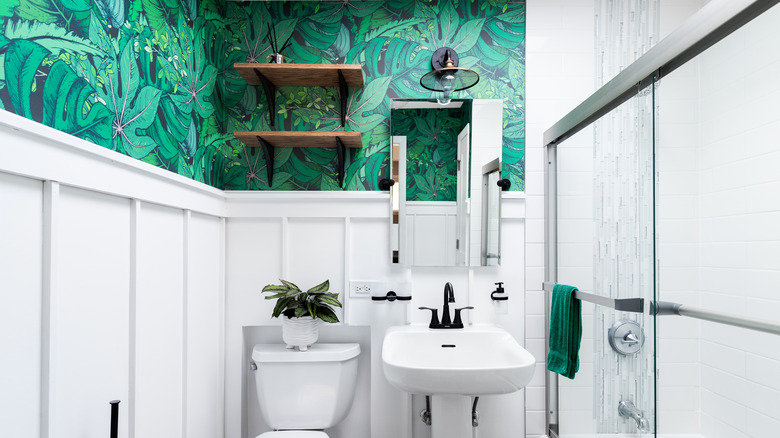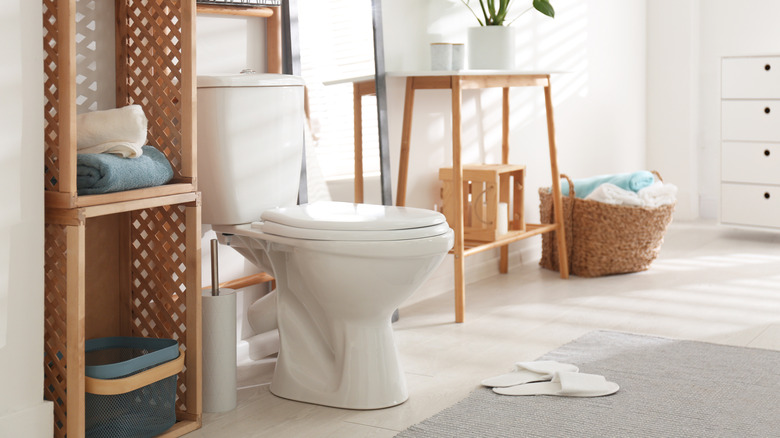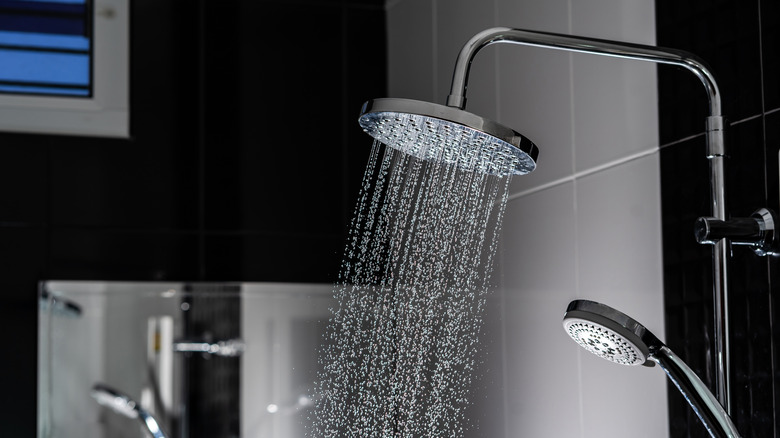5 Ways You Can Tell There's Water Leaking In The Bathroom
Is there water leaking in your bathroom? You may not even know that there's a water leak until you receive a hefty water bill in the mail. Water leaks can be costly to repair and even detrimental to your health if mold begins to grow, so it is important to identify and fix a leak as soon as possible. The longer a water leak goes unnoticed the more problems it will create. If you know where to look and how to identify smells you can find and repair a water leak before any permanent damage is done.
A musty-smelling bathroom is a sign that there is a leak somewhere. Angi explains that a musty smell can be recognized as earthy. While it may not pinpoint where the leak is it can tip you off that you need to look for other signs to find the leak. Once you know you have a water leak it may be a simple job to repair it, or if it's in an area that's difficult to access the best way to fix it is by calling a professional. A plumber will be able to find what's causing the leak and have the correct tools to repair it.
Mold and mildew
The presence of mold or mildew is a big indicator of a water leak. It's not unordinary to see mold or mildew in parts of your bathroom where water accumulates, like showers and sinks, but it's a problem if you notice it growing in other places. Mold grows in places that are moist and dark so it can point you to hidden water leaks.
If you notice mold or mildew growing on bathroom walls, floors, or ceilings you should be concerned. Other than pointing you in the direction of a potential leaky pipe behind your walls or under your floors, mold is dangerous to your health, according to The Waterworks. Mold can cause an allergic reaction with symptoms like watery eyes, runny noses, sneezing, headaches, and difficulty breathing. Since mold is not only unsightly to look at, but a health hazard it's important to take care of the leak as soon as possible so the mold can be cleaned before it spreads.
Damaged walls or floors
Unexplainable damage to your bathroom walls and floors is another sign of water leaking. If drywall gets wet it will crumble, bubble, and even warp or break apart. Before you notice your drywall deteriorating you may see the paint blistering or chipping off the wall. Or if you have wallpaper, it will begin to peel off when wet and show water stains.
Floors can be affected by leaking water from pipes under the floor or water that has traveled from other areas, according to Angi. You will know that there's a water leak if your floors have dark stains, are buckling, or feel soft and spongy. Loose tiles can be another sign of a leak. If your tiles are moving or if you are able to pick a tile up, you may have an issue with water from your shower escaping through the grout or caulk and leaking into your floor or walls.
Unstable toilet
When you sit on your toilet does it wobble? If it is unstable your toilet potentially has a flange leak, according to The Pink Plumber. Toilets are supposed to sit stable on the bathroom floor and should never be able to be moved around. There are screws that keep the toilet secured down to the floor and a wax ring that connects the toilet to the waste pipe. The wax ring creates a water-tight seal so nothing leaks when water and waste are moving through the toilet. If the wax seal is damaged or worn down it will no longer provide the proper seal, causing a flange leak and allowing wastewater to seep out.
Other than the toilet being unstable, other ways to identify a toilet leak is by seeing wastewater on the floor after flushing or if there is a bad smell in your bathroom with no known cause. This smell often comes from the pipe that would otherwise be sealed by the wax ring.
Wet bathroom cabinets
Wet bathroom cabinets are a sure-fire way to tell if you have a water leak in your bathroom. When your cabinets are wet it is likely because of leaks from sink faucet or water supply lines. You will know that your cabinets are damp if you see any water stains inside the cabinets. If it is a leak from a water supply line The Pink Plumber explains that you will see water dripping out from the connectors or even puddles in the cabinets.
For leaky sink faucets, you may notice that the knobs or body of the faucet are loose when you go to turn the water on. Loose or ill-fitting faucets will allow water to go through the mounting hole and drip into the cabinet. There is also the possibility of a leak at the rim of the sink, which would cause water to pass underneath and into the cabinet.
Water meter and expensive water bills
An unexpectedly expensive water bill can be a sign that there is an unknown water leak in your home. Monthly water bill statements show your home's water consumption, so if it shows more water than you usually use it could be because of a leak. Another way to monitor your water usage before receiving a large water bill is to look at the flow indicator on your water meter.
Today's Homeowner explains that the flow indicator on your water meter can show if you have any water leaks. To do this you will first need to turn off everything in your home that uses water, including faucets, toilets, dishwashers, sprinklers, and ice makers. Then take the cover off of your water meter and look for a small rotating wheel, that's the flow indicator. If it is moving there is a leak since no water should be flowing.
